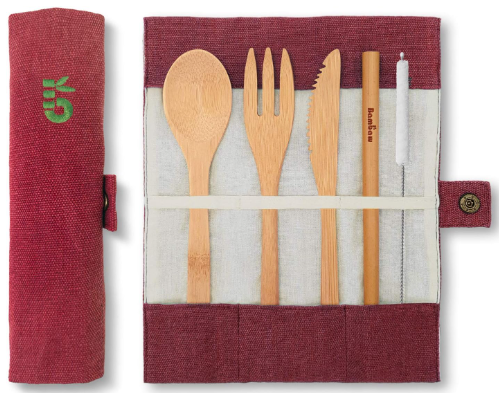Scaling Up Bamboo Cutlery Production: Strategies and Solutions for Sustainable Growth
Introduction
In recent years, bamboo cutlery has emerged as a leading alternative to plastic utensils, driven by its eco-friendly attributes and growing consumer awareness of environmental issues. As demand for sustainable products rises, there is an urgent need to enhance bamboo cutlery production to keep pace. This article delves into various machinery strategies essential for scaling production effectively to meet this burgeoning demand.
The Rise of Bamboo Cutlery
Bamboo cutlery has become increasingly popular due to its renewable, biodegradable nature, making it an attractive option for both environmentally conscious consumers and businesses. Unlike plastic, which contributes significantly to environmental pollution, bamboo is a sustainable resource that supports eco-friendly consumption.
With rising awareness about the environmental impacts of single-use plastics, the demand for bamboo cutlery is surging. However, scaling production to meet this demand presents challenges, primarily due to traditional, labor-intensive manufacturing processes. Ensuring consistent quality and managing production costs are critical for sustainable growth in the bamboo cutlery industry.
Automation vs. Manual Processes
Automation offers significant advantages over manual production methods in the bamboo cutlery industry. It reduces labor costs and boosts productivity by automating repetitive tasks such as cutting, shaping, and finishing bamboo. This not only increases output but also ensures consistent product quality.
Shifting to automated processes streamlines production, making it easier to scale operations to meet rising consumer demand. Embracing automation allows businesses to remain competitive while adhering to sustainable manufacturing practices. Automated solutions are particularly beneficial for producing eco-friendly items like bamboo cutlery, enhancing efficiency and cost-effectiveness while maintaining high quality.
Challenges in Bamboo Cutlery Production
Scaling bamboo cutlery production comes with several challenges. Traditional methods, which are labor-intensive, often struggle to keep up with increasing demand. This can lead to production bottlenecks and hinder scalability.
Maintaining consistent quality across large volumes is crucial to meet consumer expectations and uphold brand reputation. Balancing quality assurance with cost-effective production is essential for profitability and long-term viability. Therefore, integrating advanced machinery and automation is vital to streamline operations, enhance productivity, and ensure bamboo cutlery remains a competitive choice in the eco-friendly market.
Machinery Strategies for Scaling Production
To tackle the challenges of scaling bamboo cutlery production, businesses are increasingly investing in advanced machinery and automation. This strategic move not only enhances efficiency but also ensures consistent product quality.
Specialized bamboo processing machines and cutlery shaping equipment play a crucial role in streamlining production. These technological upgrades increase production capacity and reduce labor costs compared to traditional methods. Automation of tasks such as cutting and shaping bamboo facilitates smoother and faster production processes, meeting the growing demand for eco-friendly products and strengthening market competitiveness.
Specific Machinery and Equipment
Key to efficient bamboo cutlery production are specialized machines that handle various stages of the manufacturing process. Bamboo processing machines convert raw bamboo into components ready for cutlery production. These machines are designed to handle bamboo’s unique properties, ensuring precision and efficiency.
Additionally, equipment for shaping and finishing bamboo is vital for maintaining high-quality standards. This machinery ensures each piece of bamboo cutlery meets stringent criteria before packaging and distribution. Together, these machines form the backbone of a streamlined production process, achieving operational efficiency and product quality goals.
Sustainable Practices in Machinery Selection
Selecting machinery for bamboo cutlery production with sustainability in mind is critical. Opting for energy-efficient technologies reduces the environmental footprint of manufacturing operations. These technologies minimize energy consumption and lower greenhouse gas emissions associated with production.
Implementing waste reduction and recycling strategies further enhances the eco-friendly profile of the production cycle. By choosing machinery that aligns with sustainable practices, businesses contribute positively to environmental conservation while meeting the increasing demand for sustainable products like bamboo cutlery. This approach supports long-term viability and reinforces a commitment to environmental stewardship.
Case Studies of Successful Implementations
Several companies have successfully scaled bamboo cutlery production by adopting innovative machinery strategies. For instance, Company A integrated automated bamboo processing machines, significantly enhancing production capacity without compromising quality. This technological advancement streamlined their manufacturing process, enabling them to meet growing consumer demand effectively.
Such case studies highlight the benefits of investing in cutting-edge machinery to achieve scalability and operational efficiency in bamboo cutlery production. By adopting these approaches, companies can maintain competitiveness while upholding high standards of product integrity and sustainability.
Considerations for Different Enterprises
Whether a small startup or a large corporation, tailoring machinery strategies to suit the scale of production is essential. Flexible machinery solutions enable businesses to adapt to varying demand and market conditions effectively, ensuring sustainable growth and operational success.
Future Trends and Innovations
Future advancements in bamboo processing technologies promise further innovation. Emerging trends such as robotic automation and artificial intelligence (AI) could revolutionize production processes, making them more efficient and cost-effective over time. These innovations hold the potential to transform bamboo cutlery manufacturing, enhancing productivity and sustainability.
Conclusion
In conclusion, scaling bamboo cutlery production relies on strategic investments in advanced machinery and sustainable practices. Automation plays a key role in improving efficiency and maintaining product quality amidst rising consumer demand. By selecting equipment that aligns with eco-friendly principles, businesses not only meet market needs but also uphold their commitment to environmental conservation. Embracing these technologies and practices enhances operational effectiveness and supports the industry’s shift towards sustainable manufacturing.

Leave a Reply